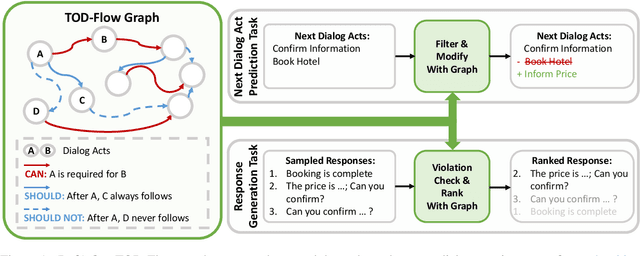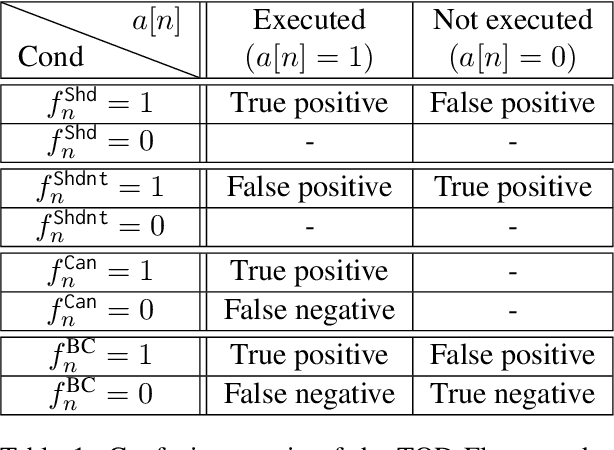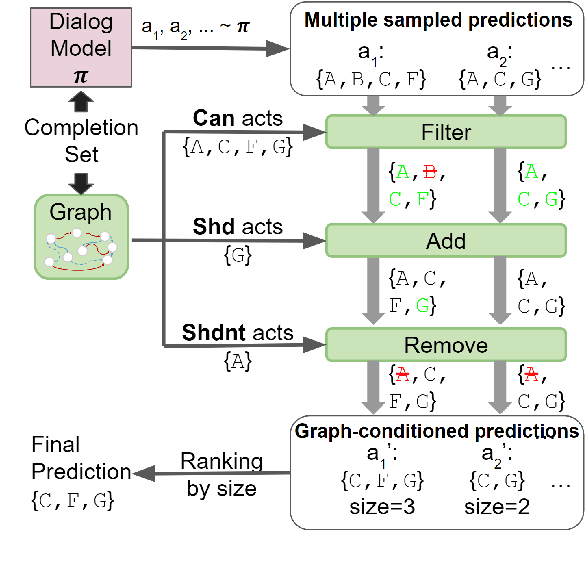Anthony Liu
TOD-Flow: Modeling the Structure of Task-Oriented Dialogues
Dec 07, 2023



Abstract:Task-Oriented Dialogue (TOD) systems have become crucial components in interactive artificial intelligence applications. While recent advances have capitalized on pre-trained language models (PLMs), they exhibit limitations regarding transparency and controllability. To address these challenges, we propose a novel approach focusing on inferring the TOD-Flow graph from dialogue data annotated with dialog acts, uncovering the underlying task structure in the form of a graph. The inferred TOD-Flow graph can be easily integrated with any dialogue model to improve its prediction performance, transparency, and controllability. Our TOD-Flow graph learns what a model can, should, and should not predict, effectively reducing the search space and providing a rationale for the model's prediction. We show that the proposed TOD-Flow graph better resembles human-annotated graphs compared to prior approaches. Furthermore, when combined with several dialogue policies and end-to-end dialogue models, we demonstrate that our approach significantly improves dialog act classification and end-to-end response generation performance in the MultiWOZ and SGD benchmarks. Code available at: https://github.com/srsohn/TOD-Flow
Predictive Information Accelerates Learning in RL
Jul 24, 2020



Abstract:The Predictive Information is the mutual information between the past and the future, I(X_past; X_future). We hypothesize that capturing the predictive information is useful in RL, since the ability to model what will happen next is necessary for success on many tasks. To test our hypothesis, we train Soft Actor-Critic (SAC) agents from pixels with an auxiliary task that learns a compressed representation of the predictive information of the RL environment dynamics using a contrastive version of the Conditional Entropy Bottleneck (CEB) objective. We refer to these as Predictive Information SAC (PI-SAC) agents. We show that PI-SAC agents can substantially improve sample efficiency over challenging baselines on tasks from the DM Control suite of continuous control environments. We evaluate PI-SAC agents by comparing against uncompressed PI-SAC agents, other compressed and uncompressed agents, and SAC agents directly trained from pixels.
 Add to Chrome
Add to Chrome Add to Firefox
Add to Firefox Add to Edge
Add to Edge